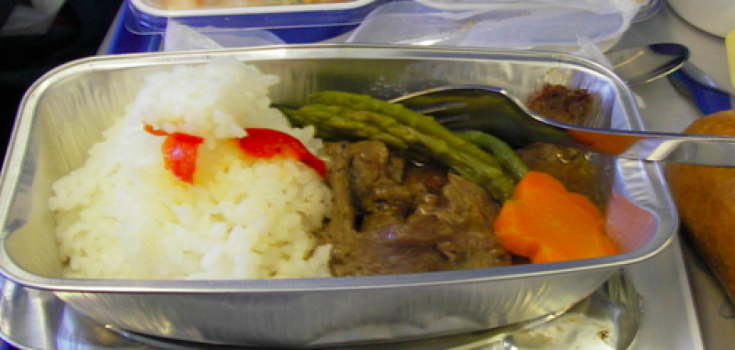Nippon Airways to Feed Customers Fukushima Food

If you’ve understandably compared airplane food to tasteless cardboard, you’ve at least been eating cuisine that wasn’t contaminated with radiation. Now, Nippon Airways Co. Ltd. (NAC) will be serving their customers in the friendly skies ‘Fukushima food.’
From this March until May, they will feature food from the Fukushima prefecture, part of a marketing campaign that was meant to highlight food from all over Japan.
In their internationally-connecting lounges, NAC will serve Fukushima peaches, tomatoes, and beef, as well as 12 kinds of rice wine.
A local newspaper reported Fukushima tomato will also be served for in-flight meal for a portion of the flights in Europe, North America, and Singapore. But it is not mentioned on All Nippon Airways’ (ANA) website.
Odd, since Japanese officials recently banned Fukushima beef from being shipped internationally due to contamination, though they waited months before halting shipment of radiated cattle to meat processing facilities. It is thought that at least 650 cattle were contaminated from eating radioactive hay.
Read: Radiation in Tuna Triples After Fukushima
“Around 650 beef cattle from northeast Fukushima and neighbouring prefectures are thought to have eaten hay contaminated with radioactive caesium since late March before being sent to meat processing facilities across Japan.”
At one point, rice seedlings sat in storage deemed unfit for consumption, and only recently did farmers start to replant and “pray that their rice wouldn’t be full of radiation.”
“‘All I can do is pray there will be no radiation,’ Ogata, 58, said last week, wiping his sweat during a break in his 1.5-hectare paddy 60 kilometers (35 miles) from the Fukushima Dai-ichi nuclear plant. ‘It’s not our fault at all, but the land of our ancestors has been defiled.'”
How can tomatoes or other fruit grown in the same soil be safe for consumption?
Maybe Nippon Airways has been living under a rock, but 12 kinds of radioactive rice wine surely won’t make air sickness any better.
Photo credit: Fukushima-Diary
